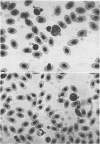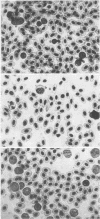Abstract
Several immunological, hematological, and pathological responses associated with Marek's disease were determined. Four-week-old Marek's disease-infected and control chickens were injected with Salmonella pullorum antigen. About one-half of all infected chickens tested were unresponsive to antigenic challenge. Antibody titers in responsive infected chickens were significantly depressed at 1 and 2 weeks post-inoculation when compared to controls. Total white blood cell counts of control and control-antigen chickens were significantly lower than counts in infected chickens. Based on response to antigenic challenge, 24% of the responsive group had leukemia compared to 54% of the unresponsive chickens. The predominant cell populations in these two groups responsible for the mononuclear cell leukemia were large lymphocytes and blast cells. These cell increases were significantly greater in unresponsive chickens. Also, transient increases in the granulocytic elements were observed in some infected chickens. Large fluctuations in hematocrit values were observed in Marek's disease-infected chickens. As many as 30% of the infected chickens were anemic throughout the testing periods. Infected chickens which did not receive antigen had lower incidences of mortality and gross lesions than similarly treated chickens which did receive antigen. In addition, those chickens which were unresponsive to antigenic challenge had a higher mortality rate and increased percentages of gross lesions when compared with responsive chickens.
Full text
PDF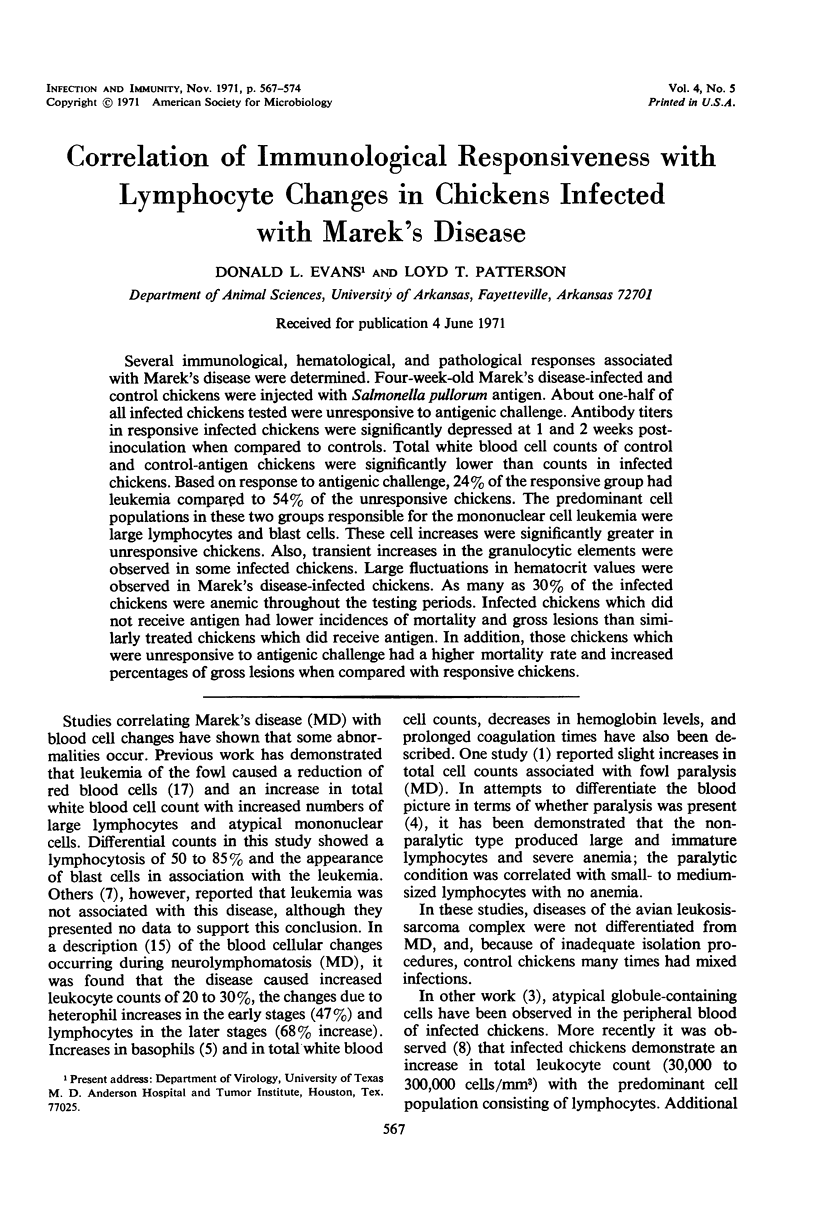
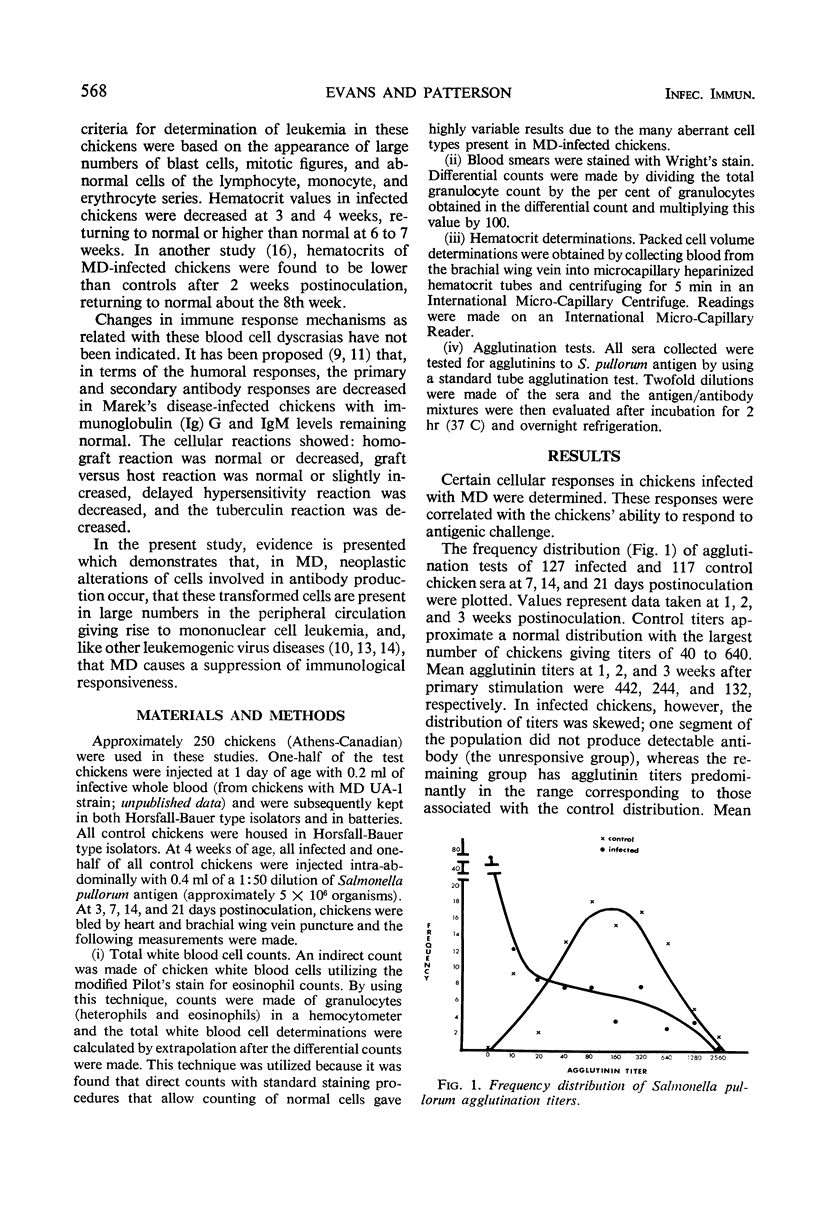
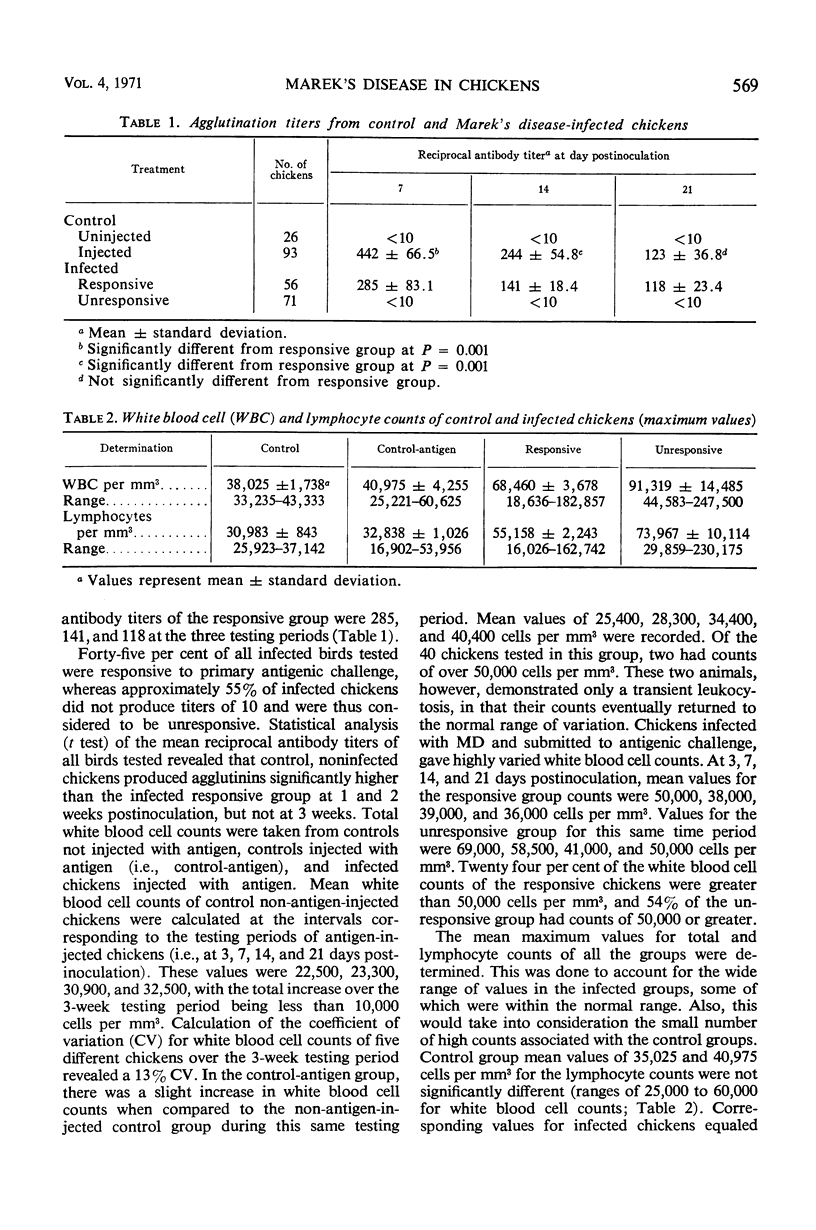
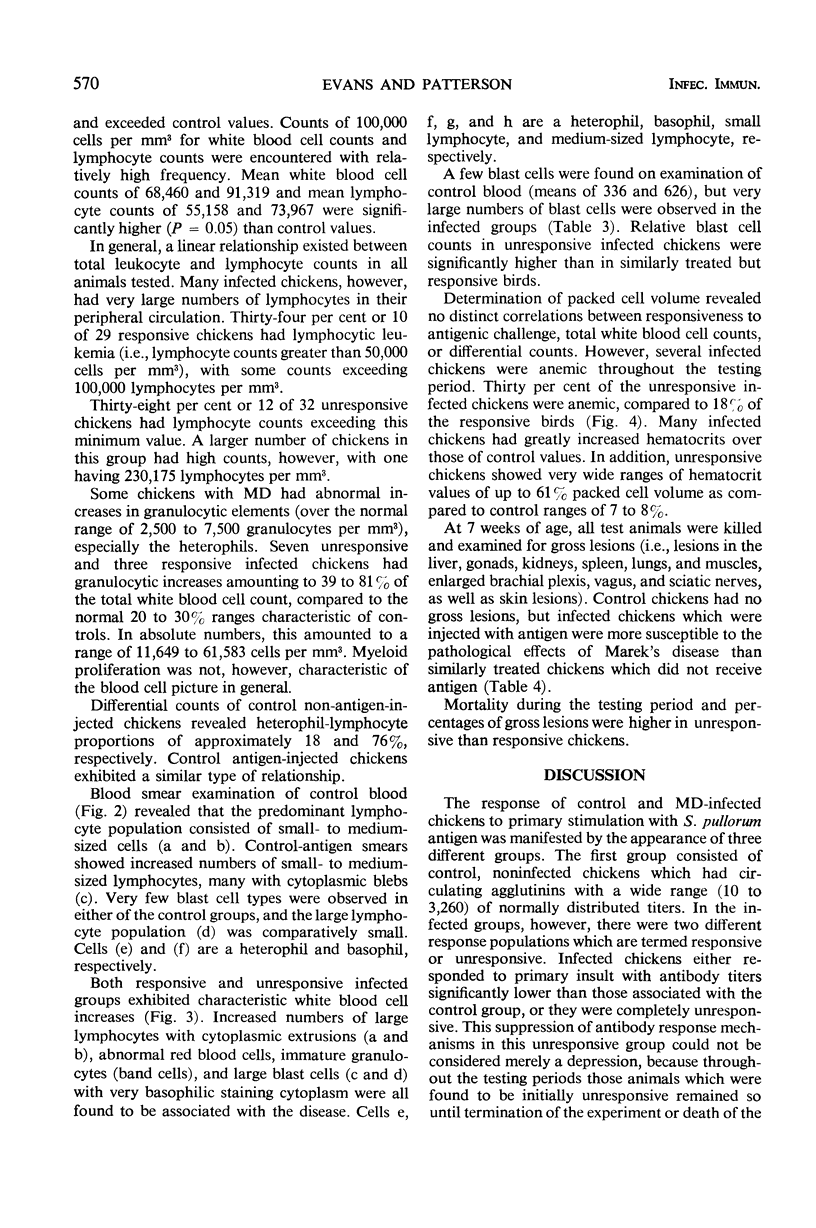
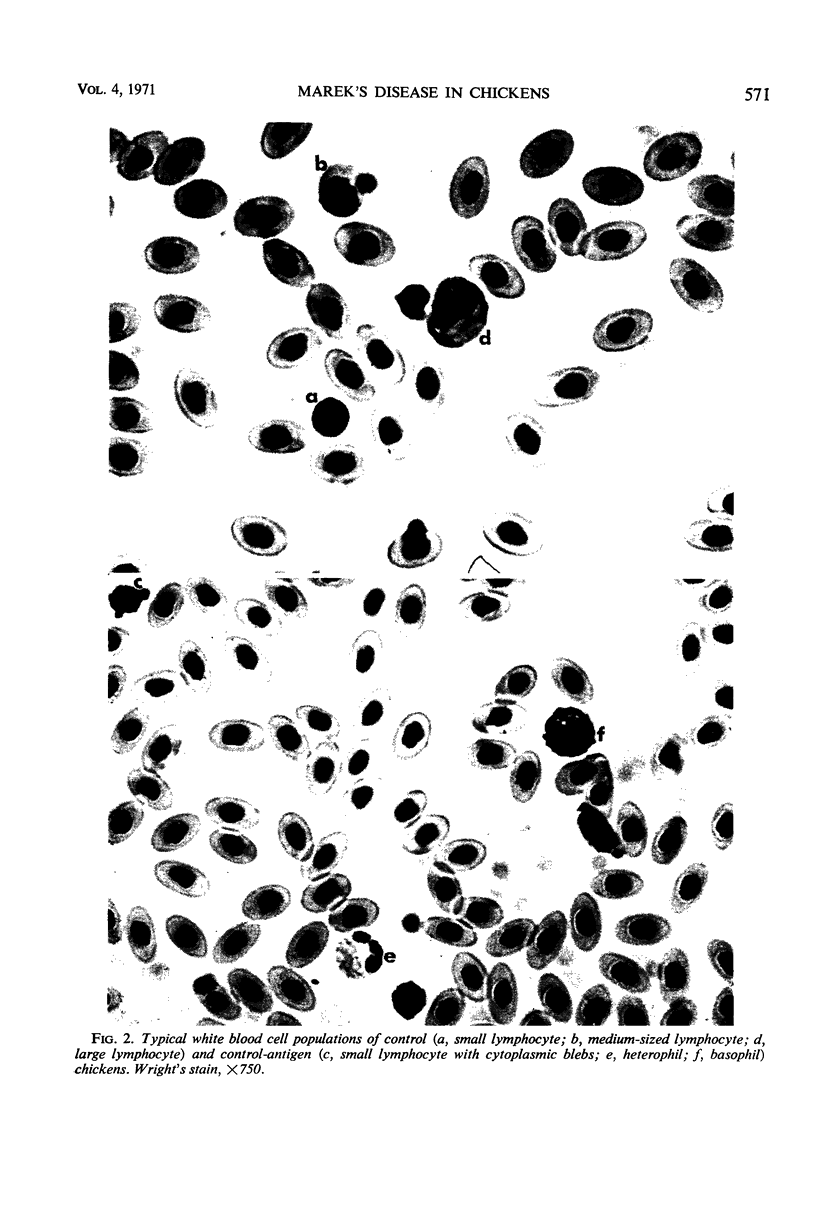
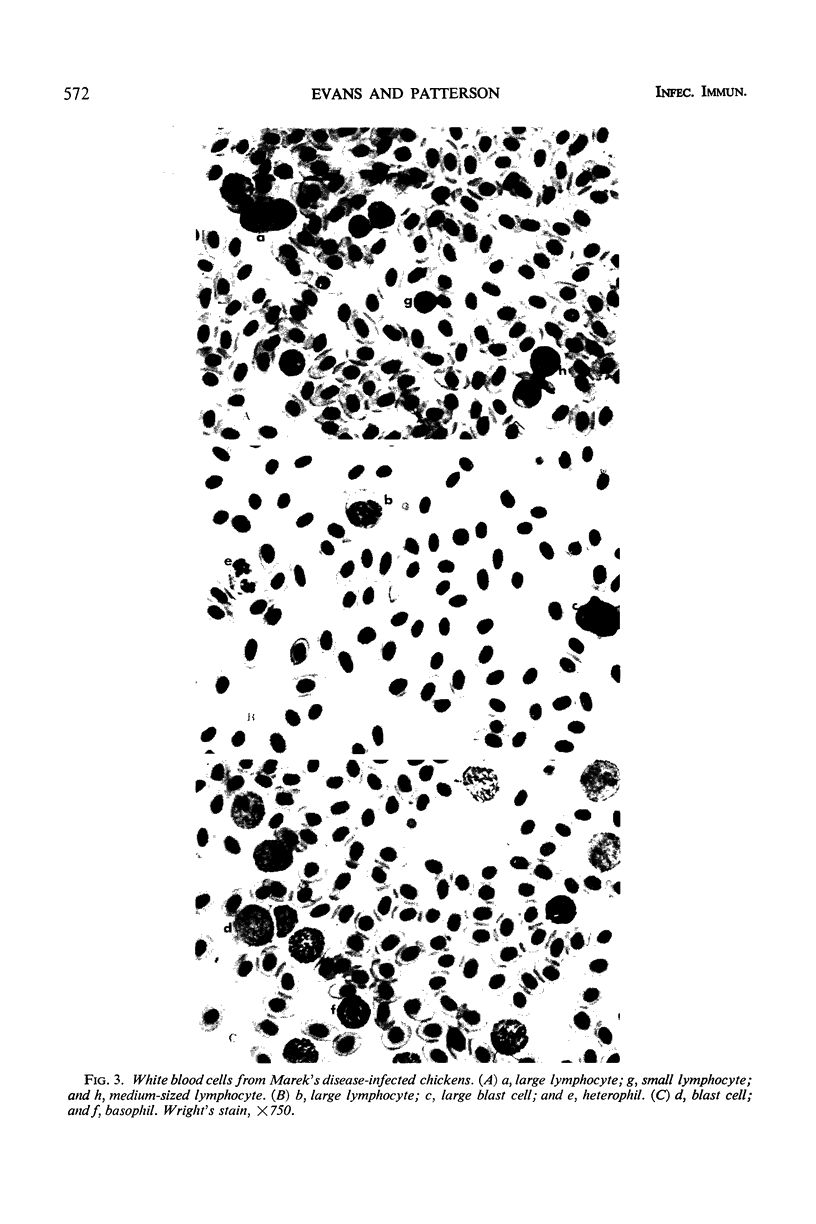
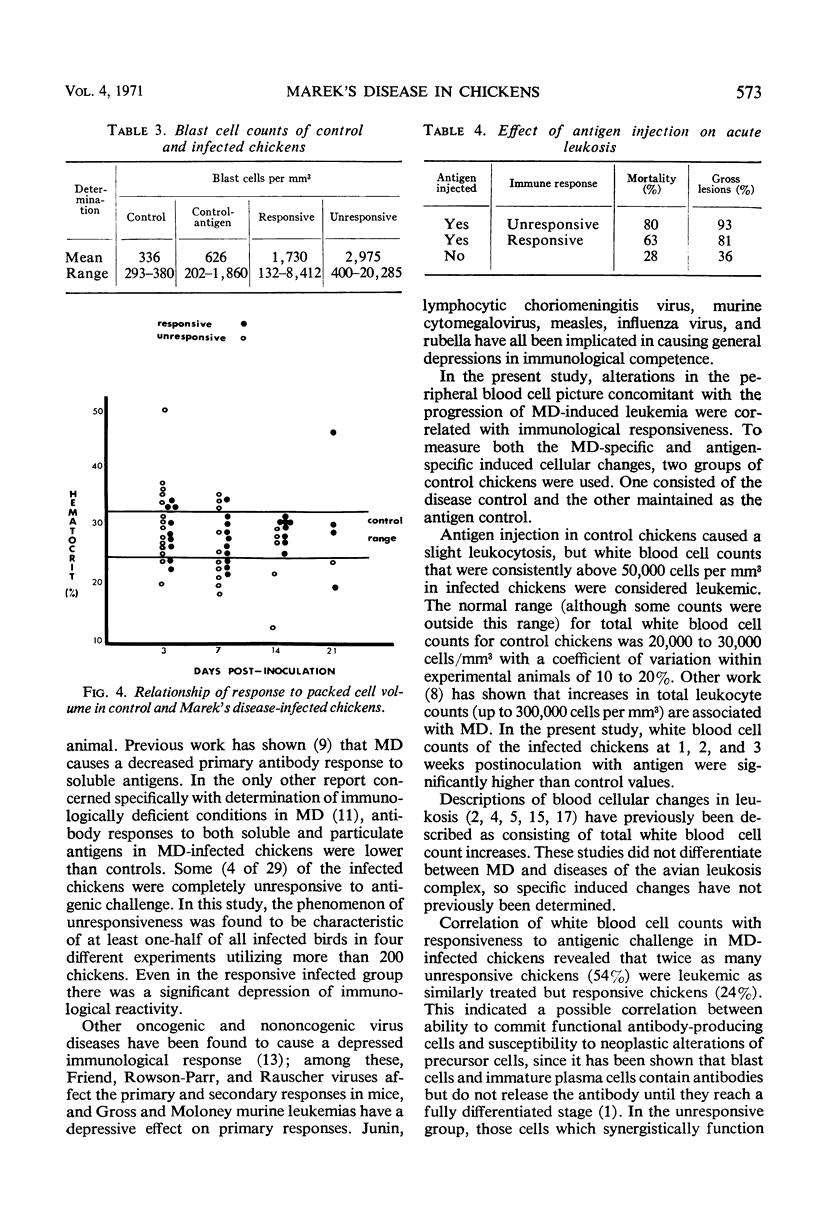
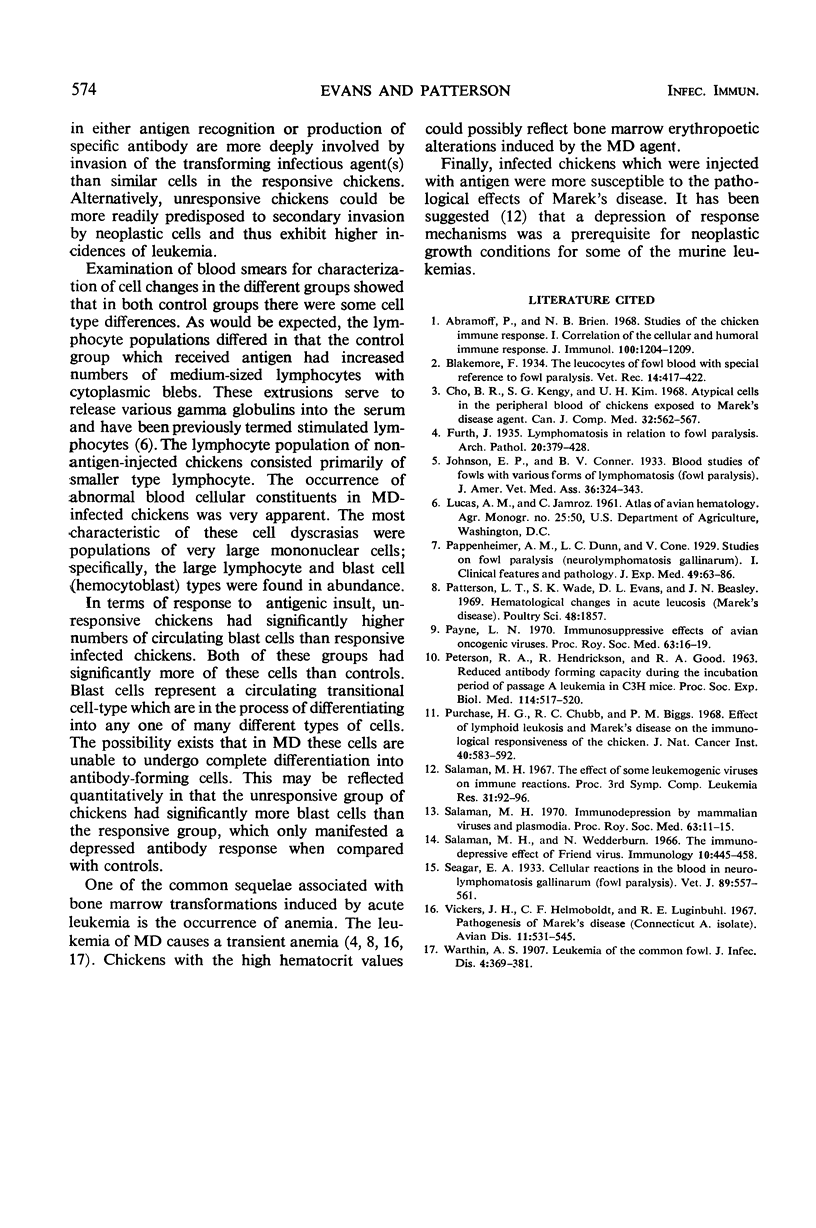
Images in this article
Selected References
These references are in PubMed. This may not be the complete list of references from this article.
- Abramoff P., Brien N. B. Studies of the chicken immune response. I. Correlation of the cellular and humoral immune response. J Immunol. 1968 Jun;100(6):1204–1209. [PubMed] [Google Scholar]
- Cho B. R., Kenzy S. G., Kim U. H. Atypical cells in the peripheral blood of chickens exposed to Marek's disease agent. Can J Comp Med. 1968 Oct;32(4):562–567. [PMC free article] [PubMed] [Google Scholar]
- PETERSON R. D., HENDRICKSON R., GOOD R. A. REDUCED ANTIBODY FORMING CAPACITY DURING THE INCUBATION PERIOD OF PASSAGE A LEUKEMIA IN C3H MICE. Proc Soc Exp Biol Med. 1963 Nov;114:517–520. doi: 10.3181/00379727-114-28720. [DOI] [PubMed] [Google Scholar]
- Payne L. N. Immunosuppressive effects of avian oncogenic viruses. Proc R Soc Med. 1970 Jan;63(1):16–19. [PMC free article] [PubMed] [Google Scholar]
- Purchase H. G., Chubb R. C., Biggs P. M. Effect of lymphoid leukosis and Marek's disease on the immunological responsiveness of the chicken. J Natl Cancer Inst. 1968 Mar;40(3):583–592. [PubMed] [Google Scholar]
- Salaman M. H. Immunodepression by mammalian viruses and plasmodia. Proc R Soc Med. 1970 Jan;63(1):11–15. [PMC free article] [PubMed] [Google Scholar]
- Vickers J. H., Helmboldt C. F., Luginbuhl R. E. Pathogenesis of Markek's disease (Connecticut A isolate). Avian Dis. 1967 Nov;11(4):531–545. [PubMed] [Google Scholar]



